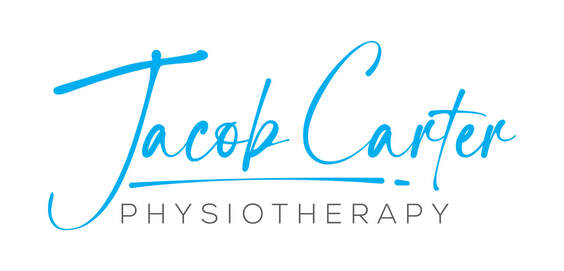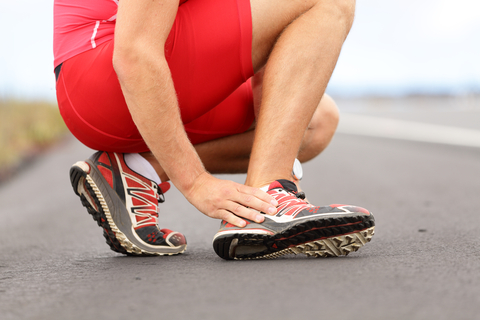|
Rule #1: A good historian can lead to an accurate assessment and better treatment results.
Try to determine what happened during the incident and write it down - Did the symptoms appear immediately or gradually? How would you describe the symptoms? Was there a noise (e.g. pop/crack)? Did it change shape (e.g. bruising / swelling / fracture / dislocation / muscle spasm)? Could you bear weight on the affected leg or arm? Rule #2: When certain that no immediate medical intervention is needed, address the acute pain. A) Apply ice for a few days while the acute pain exists: While there is no definite answer to the effects of cryotherapy (ice packs) on inflammation, there is evidence that ice reduces pain. Most research demonstrates that its primary response in decreasing pain is due to a reduction of nerve conduction velocity. B) Consider taking an analgesic medication for a couple days to help cope with the initial pain. Speak with your family doctor or pharmacist for recommendations. C) Apply gentle compression (e.g. tensor bandage). Rule #3: Most acute pain will disappear with a few days of rest, unloading the injured structure and then slowly introducing pain free movement and exercise. This is largely because we have allowed inflammation and muscle spasms to decrease around nociceptors (different types of pain receptors located in almost every type of tissue). If pain continues after more than a few days of rest, it is likely that you will benefit from seeing a sports therapy practitioner to determine the cause and provide appropriate treatment. Rule #4: Continue to exercise in ways that does not irritate the injury. As a general rule, the body loves movement. The more we can move without pain, the more our brain understands that it does not need to create muscle spasm to protect our body after an injury. This means that pain free movement helps to down-regulate the sympathetic nervous system (responsible for "fight or flight"). As a result, our movement will have fewer compensations, and healing usually occurs faster. Therefore, if you are injured, feel free to take a couple rest days, but return to exercising other body parts soon! A basic example would be if you hurt your shoulder, you should still maintain cycling, running/track, and many lower body strengthening exercises. Rule #5: Healthier and younger bodies heal quicker. Healing is quicker in people with healthy bodies (children/adolescents and adults with no co-morbid conditions), immune systems, and lifestyle habits (activity level, sleep, nutrition, stress level). Optimize what you have control over: Eat healthy and often, drink 8+ glasses of water, maintain activity as possible, sleep more than you usually would, reduce your stress levels, reduce risk factors for colds/flues/illnesses. Rule #6: Our tissues heal in a sequential pattern. Take advantage of it. Your tissues heal in the same order as every other human. The amount of time needed is dependent on factors discussed in Rule #5, but estimates are provided for a healthy adult. Tissues undergo the following four stages: clot formation, inflammation, proliferation, and maturation. Clot formation (Day 0 - 2): Our body forms a blood clot on the hurt tissue to prevent blood loss or internal bleeding. During this stage, sufficient rest and protecting the injury is critical to allow the wound to heal. Inflammation (Day 0 - 5): Our immune system kills bacteria and absorbs damaged cells, while starting to build new blood vessels. During this stage, rest is important during the initial phases. As our tissues heal, we can start gentle movement to encourage blood flow into the area. Hot packs are also useful during the last couple days of this stage. Proliferation (Day 3 - 21): Our body starts to lay down weak collagen tissue (type 3 fibers) at this time. It is the initial bridge that provides some strength to the tissue and reduces the size of the wound. Movement becomes important to the target tissue: Gentle to moderate stretching, and light resistance training help to align collagen fibers in the correct direction for optimal tissue strength and bring blood flow to the area to increase the speed of healing. Maturation (Day 14 - 1 year +): Weak collagen tissue (type 3 fibers) are replaced by strong collagen tissue (type 1 fibers). These fibers require exercise to be optimally aligned - the network of fibers is initially disorganized like a spider web, but as force is applied through the tissue it aligns itself in the direction that tension is needed. It is best to start with light - moderate activity and return gradually to the previous level of exertion over a number of weeks. Rule #7: During the proliferation and maturation phases (See Rule #6), gradually increase the tension applied to the injured tissue. The safest method is to start with Isolated Contractions: Start by flexing/contracting the affected tissue. Can you turn on the muscle / make it contract without pain? If so, move on to the next method. Isometric Exercises: To do this, build up tension in the muscle by applying force against a stationary object. Start with 25% of what you think your max could be. Perform 2 sets of 10 repetitions and hold each for 10 seconds, Over a few days, gradually build up to 50-80% of what you think your max could be. Again all of this should be done without pain. Isotonic Exercises: This is the type of exercises that you are most likely to associate with lifting weights. Pick a weight that is 25% of what you think your 1 rep max would be. Slowly lift it up (concentric phase) and lower it down (eccentric phase) – 3 seconds in each direction is ideal. Focus on the form of the exercise and, if possible, consult a rehab professional or strength and conditioning coach / personal trainer. Ideally, work up to 3 sets of 8-15 repetitions at 70% of your max weight to regain lost muscle mass. Your goal is to have control through the full range of motion for this muscle. Return to Training and Sport: If the previous steps were successful, return to your previous training with cautioned excitement! Concluding Remarks Injuries take time to heal, however with the right stimulus at the right time, you can maximize your healing potential!
1 Comment
|
Have you found these article to be informative, helpful, or enjoyable to read? If so, please visit my Facebook page by clicking HERE, or click the Like button below to be alerted of all new articles!
Author
Jacob Carter lives and works in Canmore, Alberta. He combines research evidence with clinical expertise to educate other healthcare professionals, athletes, and the general public on a variety of health topics. Archives
November 2022
Categories
All
|
|
|


 RSS Feed
RSS Feed